|
The family has requested we share this event with the artworld, please attend if you are able. John will be speaking on behalf of the National Sculptors' Guild and Columbine Gallery. Celebration of Life for Carol Gold January 28, 2023, 11 a.m. at the Pavilion in Fairfax, California The Pavilion is located at: 142 Bolinas Road, Fairfax CA 94930 The family requests that in lieu of flowers, donations are made in Carol’s honor to Democracy Now! KPFA, The Sierra Club, the Marin Land Trust or Planned Parenthood.
click here to read our other posts if you would like to learn more about Carol.
0 Comments
The family requests that in lieu of flowers, donations are made in Carol’s honor to Democracy Now! KPFA, The Sierra Club, the Marin Land Trust or Planned Parenthood. The National Sculptors' Guild design team is so thrilled and honored to be finalists for Arkansas’ search for sculptors for its upcoming contribution to the National Statuary Hall. We have Jane DeDecker as a finalist for the Daisy Gatson Bates portrait, and Craig Campbell is a finalist for the Johnny Cash portrait. Both artists will be hard at work on the next phase of the process as we will be proposing concepts in the coming months. read the article by Rachel Herzog for more info: https://www.arkansasonline.com/.../finalists-named-in.../ 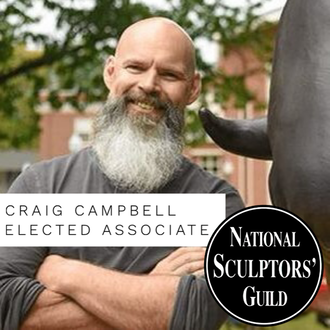 The National Sculptors' Guild Fellows have elected Craig Campbell as an Associate Member, His work is expressive and covers the gamut of subjects from strong and serious, to playful and imaginative; figurative or wildlife. We can't wait to see what new creations come from his studio and are eager to place some fantastic public art with Craig. Craig Campbell began sculpting more than 25 years ago and received his BFA in sculpture from Wichita State University. To further his goal to create figurative and representational work, he began a rigorous program of self-study in the areas of human and animal anatomy, movement, character, and proportion. He has created work for both commercial clients and fine art galleries, and his work has been commissioned by zoos and theme companies, toy companies, and the film industry, including work for The Hobbit, Elysium and Mad Max. He was a featured artist in the HISTORY channel’s “Monument Guys” TV series. learn more about Craig
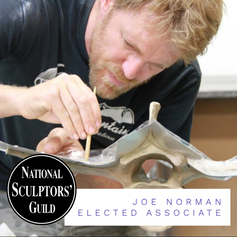 The National Sculptors 'Guild’s board of directors nominated Joe Norman to move up from Affiliate to Associate within our organization. This passed with over two-thirds support by the current Fellows. We have had amazing success from the start with Joe, placing public art in Texas, Georgia and California. The latest project was a 12-ft tall sculpture Homeward/Monarch for the City of Downey, CA. We have really enjoyed working with Joe, he always brings a creative twist to a call for art, and always with a smile. With a background in engineering, design consulting and product design plus a degree from Stanford and a bit of Middle School teaching in the mix, Joe Norman approaches art from a different perspective than most artists, and that’s the focus of the majority of his sculptures - the viewer’s perspective. How you stand in the environment of the sculpture, dictates what you see. Adjust to another side, you see something else. This can be a girl who transforms into a monarch butterfly, or words of opposing meaning living in the same space like ‘peace’ and ‘chaos’. We hope you get the chance to interact with his art, it can change ones perspective on their place in nature. “My intent is to make art that contributes to a wider conversation about justice and care and our impact on the world. I hope it helps people think and be happy; I hope it helps people be important to each other." - Joe Norman Shop online #ArtistHighlight #ColumbineGallery #JoeNorman #NationalSculptorsGuild #NSGAssociate #Sculpture #silhouette #Perspective #ImageMorph #WordPlay #Opposites #Coincide #Nature #Wonder #Monarch #Homeward #FearLove #ChaosPeace #Preorder #ShopOnline #AddToYourCollection #ArtWorthCollecting #SupportSmallBusiness #SupportTheArts #TimeToBeautifyYourSpace #BuyOriginal #LiveWithArt #KeepOurArtistsCreating #feedyourcreativespirit @jnsculpture
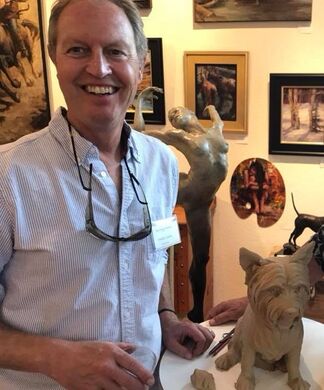 The National Sculptors’ Guild’s board of directors nominated Daniel Glanz to move up from Associate to Fellow within our organization. This passed with over two-thirds support by the current Fellows. Fellows exemplify the best qualities of the National Sculptors’ Guild through their exceptional merit of work as well as esteem in the sculpture community. Dan captures a timeless intimacy for the viewer. His art is known for its energy, movement and technical mastery. Both his figurative and his wildlife work share a powerful yet elegant quality, drawn from his classical approach to sculpture. We have seen great success with Dan, below are images of some of the current large-scale commissions we working on together. Stay tuned for completion images of these and more.  Joe Norman with his sculpture "Fear and Love" Joe Norman with his sculpture "Fear and Love" The National Sculptors 'Guild is pleased to announce our newest Affiliate member, Joe Norman. Joe graduated with a degree in Product Design from Stanford and worked with design consulting firms for a number of years before teaching middle school and customizing vintage motorcycles. For the past ten years he has been a full-time sculptor, focusing on handmade and site-specific works informed by the intersection of the natural and human-made environment. Joe was the Artist-In-Residence at Great Basin National Park and frequently speaks on art and its role in social justice. His work is in permanent public and private collections across the United States. He currently maintains his studio at Artworks Loveland. We're excited by Joe Norman's diverse exploration of material and imaginative approach to varied subject matter. From word play, to morphing silhouettes; magnified microcosms to figurative renderings from reclaimed bicycle parts, Joe fills the public space with a bit more wonder through sophisticated form. His work makes interaction unavoidable and we're pleased to add him to our team.
Smaller works are also available for the home collector. You'll start seeing Joe's sculpture at Columbine Gallery and in the National Sculptors' Guild sculpture garden by mid-October, and can start ordering online now.... click here to shop
Bonnie Gangelhoff / Southwest Art Jul 01, 2004
"I think inspiration comes from a lot of places-from where I am emotionally as well as from nature." Sculptor Carol Gold wrings strong emotions from her sleek bronze figures EVERY JANUARY, California sculptor Carol Gold settles into her studio to begin the year anew with fresh ideas for her bronze pieces and a chunk of soft, hot wax with which to give them shape. Her ideas about the forms that will occupy her heart and hands over the next 12 months have percolated in her thoughts to some degree, but arise mostly from the unconscious, Gold says. She squeezes, manipulates, and molds the wax, roughing in shapes as figures emerge-some large, some small, some flat, some rounded. Most of her forms represent the human figure, with the exception of a horse or two. "I think inspiration comes from a lot of places-from where I am emotionally as well as from nature," Gold explains from her airy, 770-square-foot studio perched on a hillside in Northern California. "My work is also informed by what`s going on in the world and what I read." Last year, for instance, Gold says her work was directly affected by the turmoil in the world, including the U.S. invasion of Iraq and the events leading up to it. "I had this feeling all last year that what I needed to do was create tranquil pieces," she says. "Some artists may respond to what`s going on in the world with anger, but I just can`t do that. I needed my sculptures to be an antidote to the chaos." TRANQUILITY and EMBRACE, both created in 2003, are two of her most peaceful pieces-ones that Gold describes as "calm and loving." In TRANQUILITY, a relaxed figure sits staring into space as if looking out a window on a beautiful day. In EMBRACE, two people wrap their arms around each other in a display of tender affection. The latter bronze also is an example of how Gold is influenced by what she reads. After finishing the book War is a Force That Gives Us Meaning [2003 ANCHOR] by Chris Hedges, the sculptor was deeply moved by one of the points the author kept stressing. Hedges, a veteran war correspondent for The New York Times, explains in the book that while covering many wars and trying to survive in various war zones-including being ambushed in Central America and imprisoned in the Sudan-the only place he ever felt safe was in the home of a loving couple or family. "EMBRACE came out of that sense of a safe place in the midst of war," Gold says. Of the many themes woven through Gold`s work, perhaps the most common is communication. Her sculptures often include two figures as in EVENING WALK, ARTTALK, and FIESTA. The moods the sculptor evokes in these twosomes are amazingly varied-from the contemplative, restful depiction of a couple strolling in EVENING WALK to the joyous dance captured in FIESTA. Gold manages to squeeze living, breathing emotion out of cold, hard bronze, whether it`s tenderness of spirit as in EMBRACE or the arrogant poses of two figures in ART TALK. THERE ARE FEW CLUES in Gold`s sophisticated pieces to reveal her personal roots. Her sleek, contemporary figures are a far artistic cry from growing up on a dairy farm in western Massachusetts. About the only trace of her childhood that a viewer glimpses is through the horses that emerge in her work every now and then. As a girl, Gold spent countless hours riding through the countryside, enjoying the calm and solitude. "I would get on my horse, and all of my anxieties would melt away," she recalls. Today her bronze equines are remnants of those bygone days. Now, as then, the horses represent freedom to the artist. "They were my only mode of escape as a child," she explains. In addition to a fondness for roaming the countryside on her horse, Gold`s other main interests in her youth were drawing and poring over her parents` book on the history of painting. "At one point my mom gave me art lessons, but I was always more interested in animals," she recalls. When she headed to Cornell University in Ithaca, NY, Gold was bent on studying veterinary medicine. But her entire world spun in a different direction one day when she signed up for an art history class. After a few hours in class, she was sure that all she ever wanted to pursue was art. Gold quickly changed her major to art and architecture but encountered some rocky patches in subsequent classes. She wanted to learn more about technique, but it was fashionable in the art department then to focus on self-expression. Married at the time, Gold and her husband moved to Boston, MA, after three years at Cornell. She transferred to Boston University, where her artistic desires were met with a more welcome attitude in the fine-arts department. "It was a breath of fresh air," Gold says. "I just wanted to learn the basics like stretching canvas and printmaking first, just the tools I needed in the beginning." In 1968 Gold moved to California, where she has remained ever since. When her four children were young, she worked at their elementary school as an assistant to a sculpting teacher. By 1972 she was sculpting full time, working first with clay. Three-dimensional forms have always held more allure for Gold, moving her in a way that painting and other two-dimensional artworks have failed to do. Likewise, figures in art have usually had an emotional impact on her, while nonobjective art rarely engages her with quite the same intensity. Gold`s work has evolved over the past two decades as she moved from clay to wax about 10 years ago. "Clay was too earthbound," she says. "Wax gives me a chance to be more expressive in my forms." While experimenting with wax she has developed a technique for incorporating pieces of burlap, which allows her to fully realize one of what she calls her "two basic sculpting vocabularies"-flat, nude figures and draped figures. Because wax is easier to manipulate than clay, the material goes a long way in helping Gold convey emotions and mood. And using wax enables her to "sketch in" figures rapidly when her ideas are taking shape at the beginning of the year. The sculptor creates about 30 such shapes, but by the end of the year only six or seven will survive and be cast in bronze. "They need to really strike me as far as the mood I am trying to convey, or I will throw them away," she says. Another signature Gold element is the stunningly rich patinas on her bronze pieces, in colors that range from earthy gold and copper tones to various shades of turquoise that often evoke a southwestern flavor. As this story went to press, the sculptor was preparing works for the prestigious Sculpture in the Park show, held every August in Loveland, CO [see page 74]. Her piece FIESTA is also scheduled for installation in Loveland`s Benson Sculpture Park this summer. Gold isn`t fond of speculating about what ideas she will explore in the future, except to say that communication is always a reoccurring theme. For now, she`s content to read, share opinions, pay attention to the world at large, and have faith that when a hunk of wax is set before her, her unconscious will light the way. Gold is represented by Bronze Coast Gallery, Cannon Beach, OR; Savage Stephens Contemporary Art Works, Carmel, CA; Coda Gallery, Palm Desert, CA, and New York, NY; and Columbine Gallery and the National Sculptors' Guild, Loveland, CO, and Santa Fe, NM. ILLUSTRATIONS EMBRACE, BRONZE, 14 × 7 × 3 ½. FIESTA, BRONZE, 29 ½ × 36 × 9. CAROL GOLD ART TALK, BRONZE, 17 × 15 × 8. CELEBRATION, BRONZE, 19 ½ × 12 × 6. KOBILA, BRONZE, 23 × 25 × 9. AUTHOR AFFILIATION: Bonnie Gangelhoff is the senior editor of Southwest Art. COPYRIGHT: Copyright Sabot Publishing, Inc. Jul 2004. |
JK Design/NSGJK Designs’ Principal, John Kinkade, founded the National Sculptors’ Guild in 1992 with a handful of sculptors who wished to find thoughtful public applications for their work. Representation has since grown to over 20 contracted sculptors and painters; plus an extended network of 200+ artists that our design team works with on a regular basis to meet each project's unique needs. click here for a list of our over 500 large-scale placements. Archives
July 2024
Categories
All
|
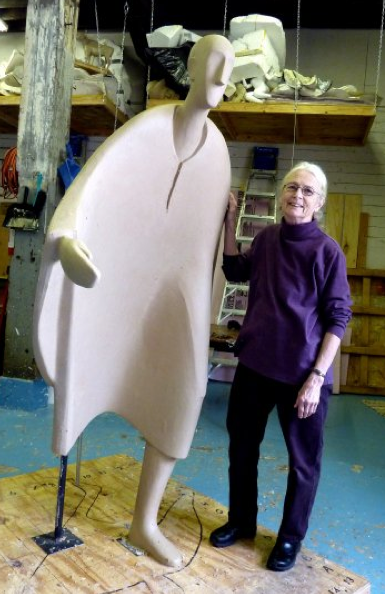
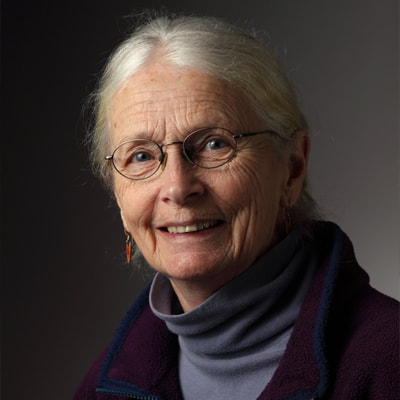
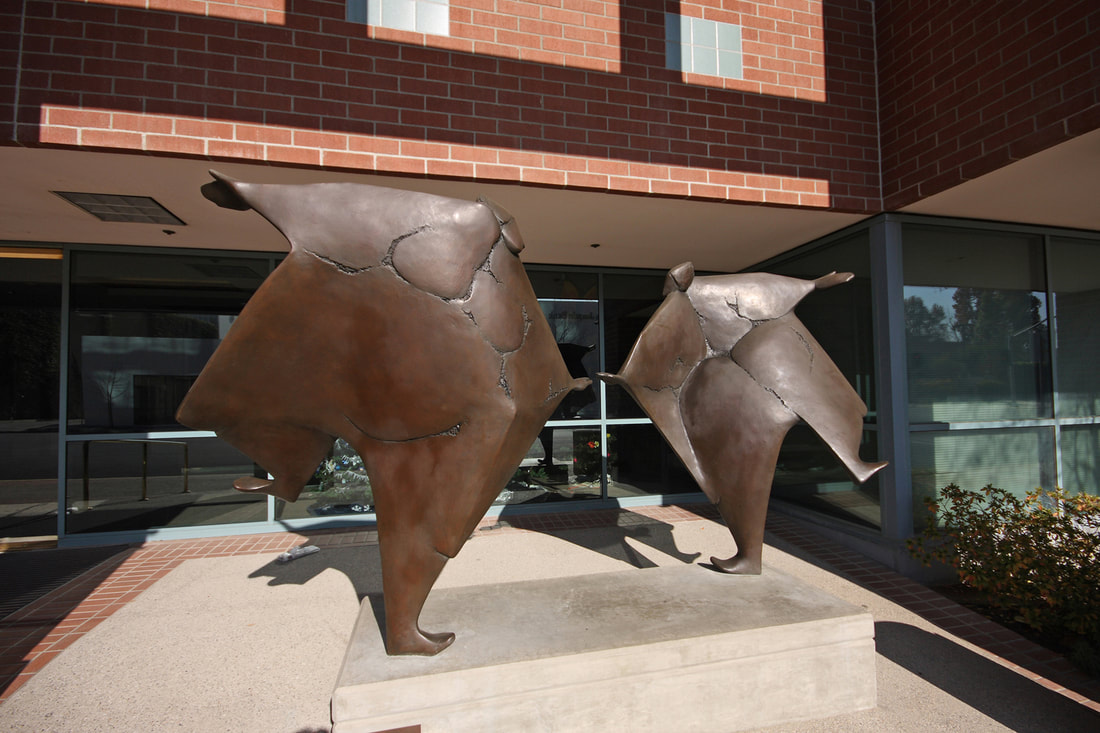
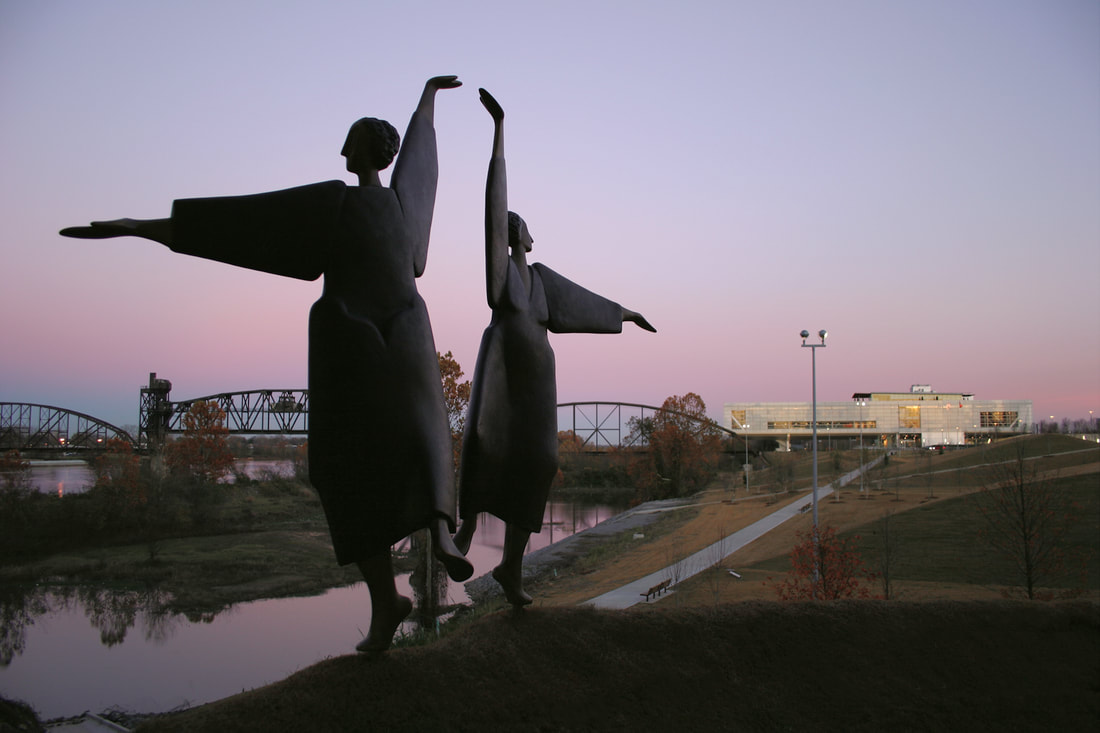
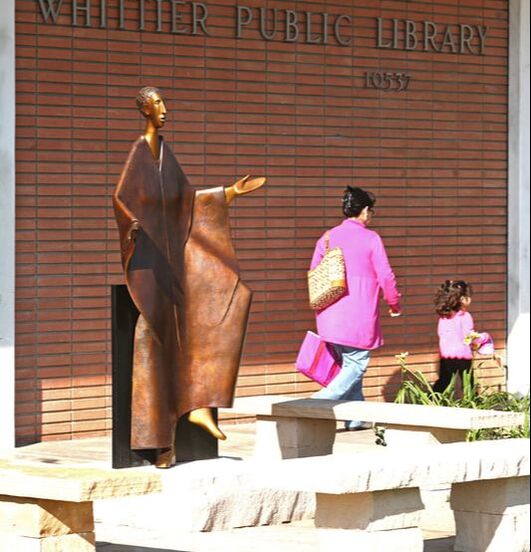
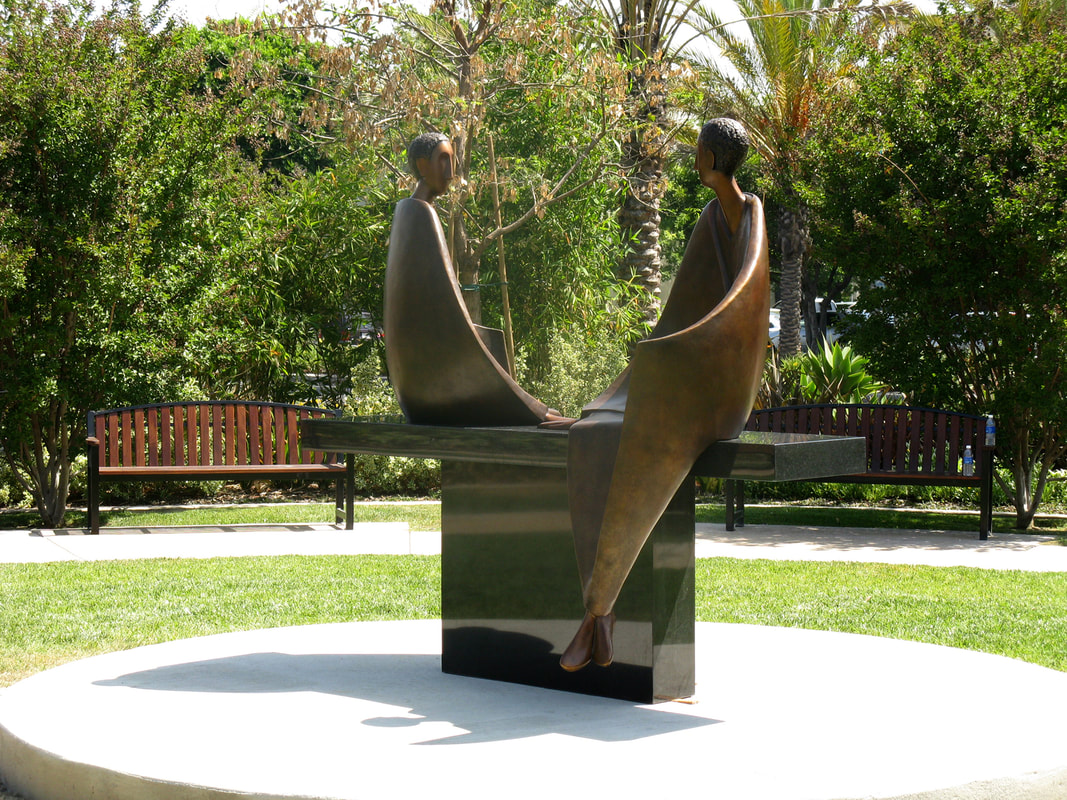
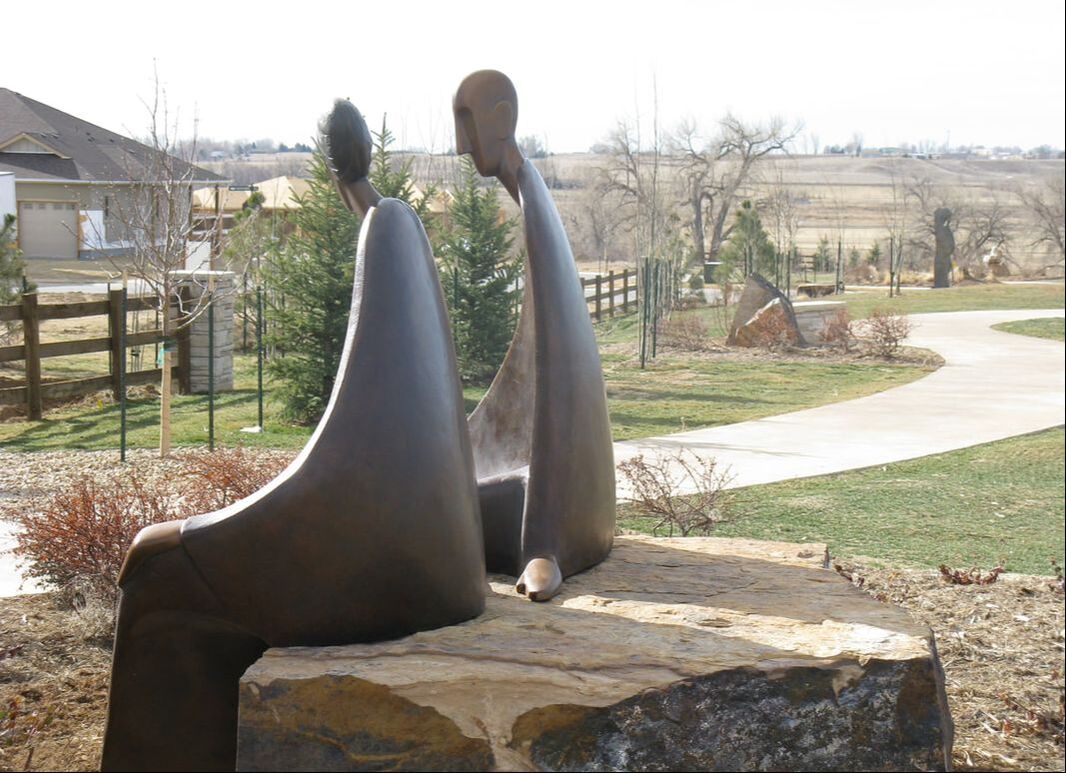
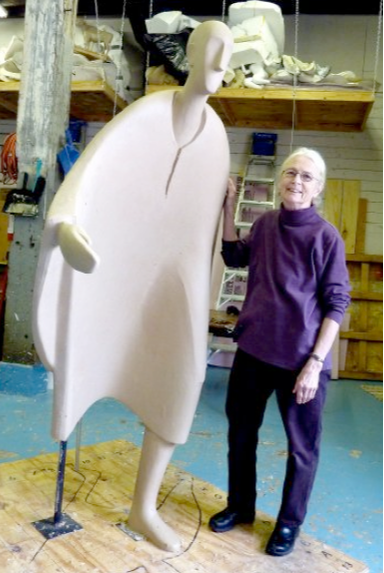
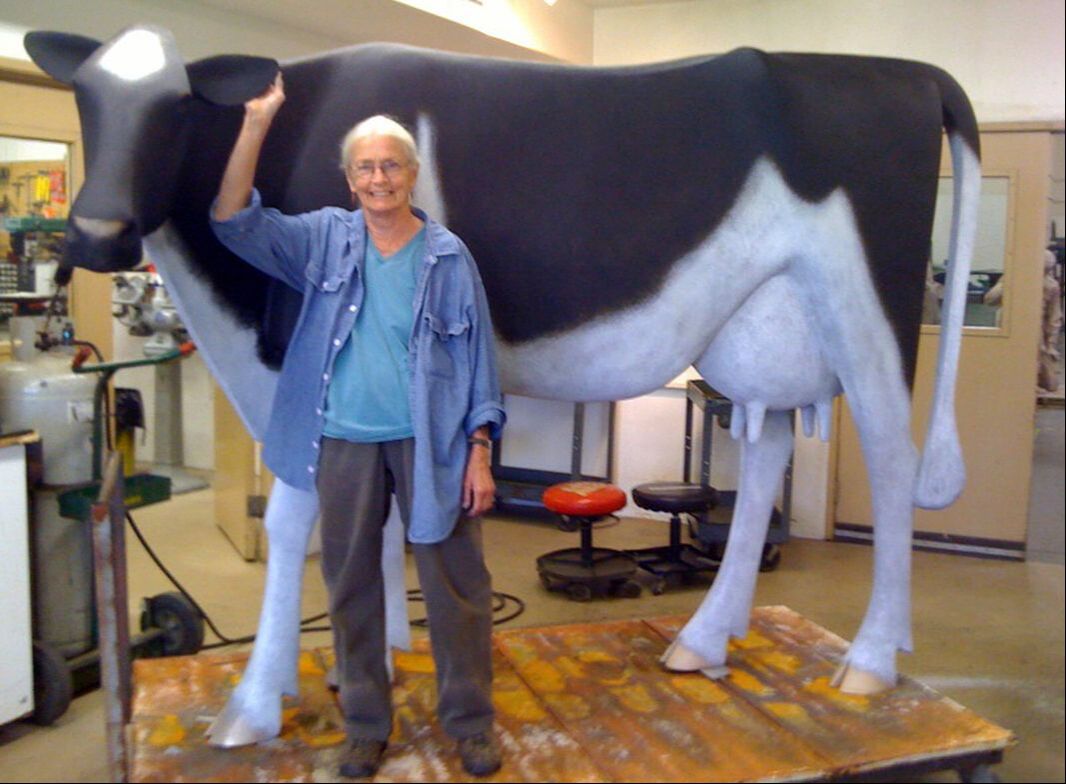
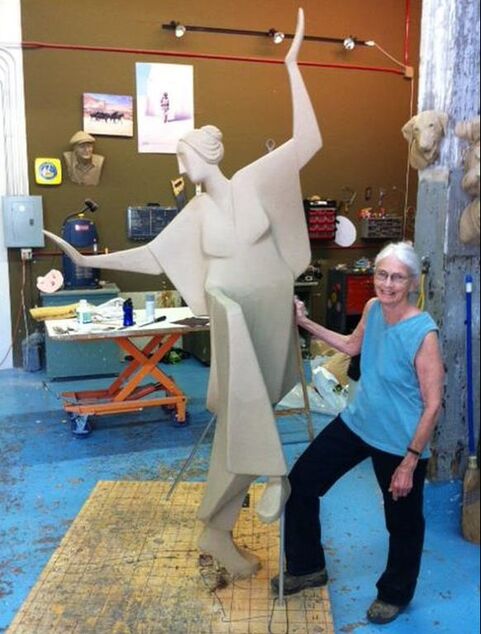
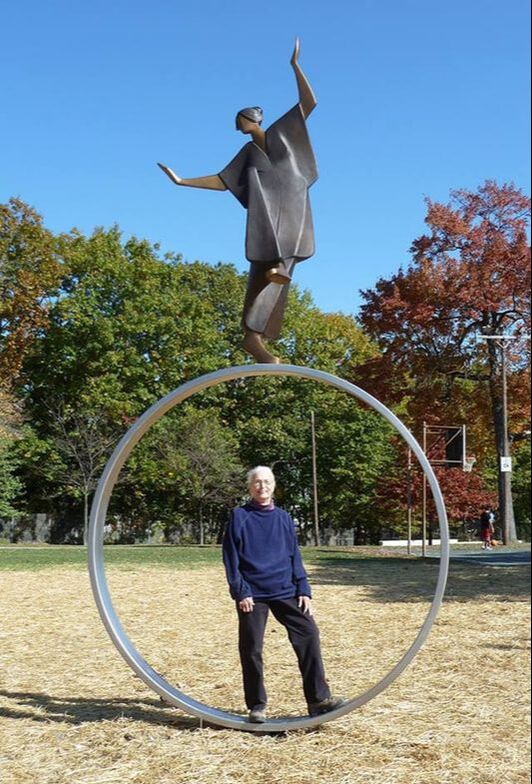
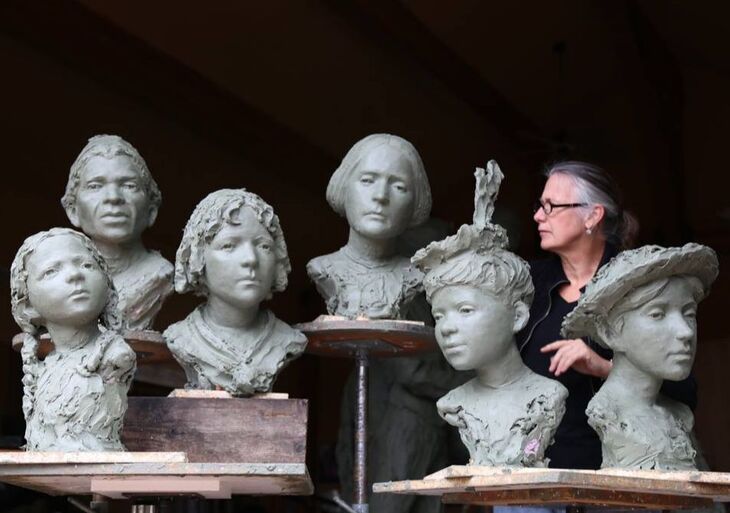
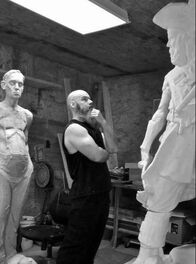
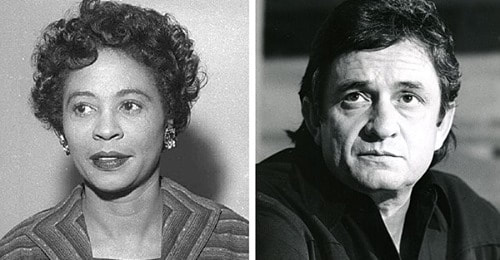
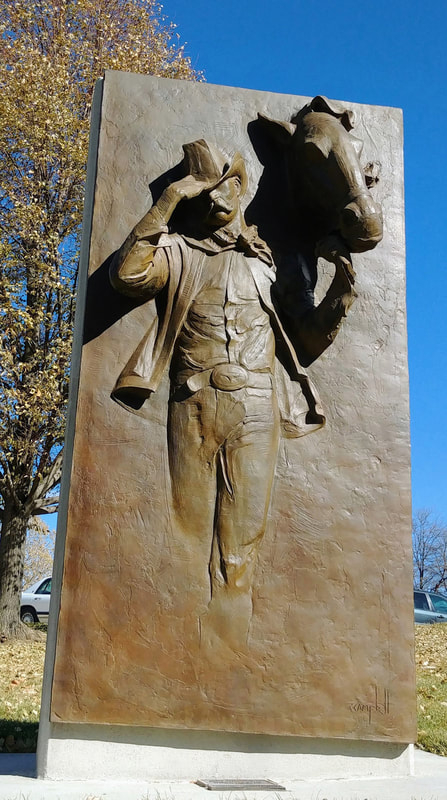
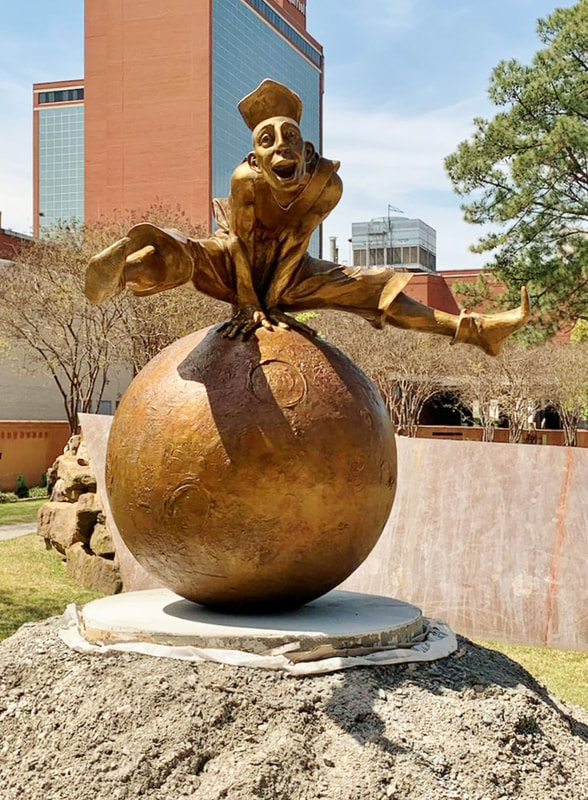

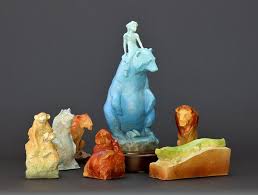
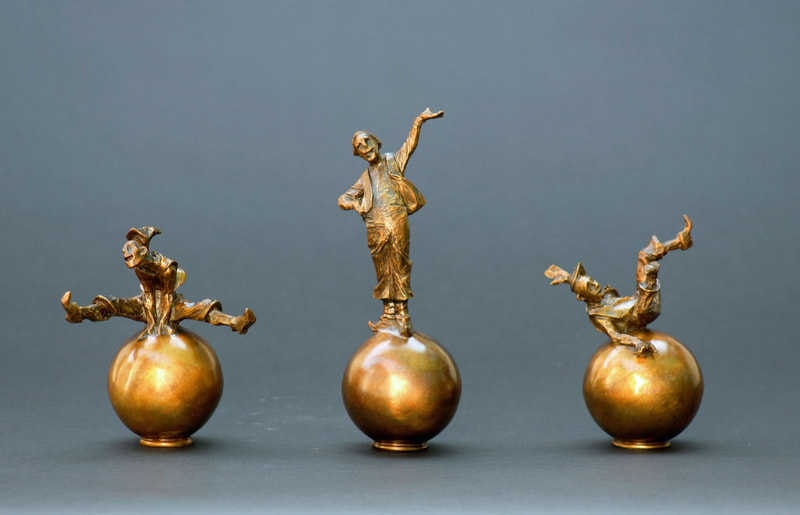
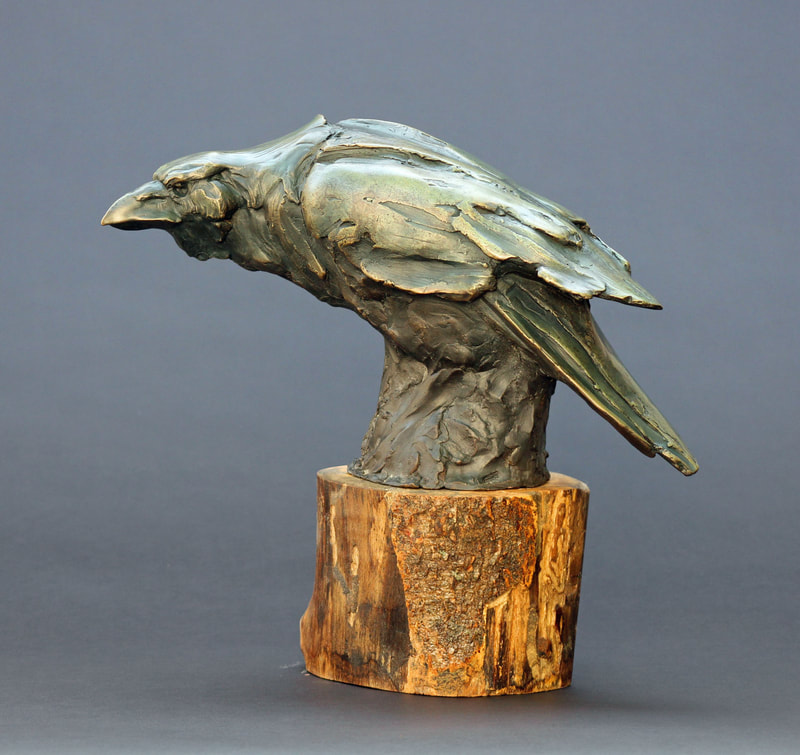
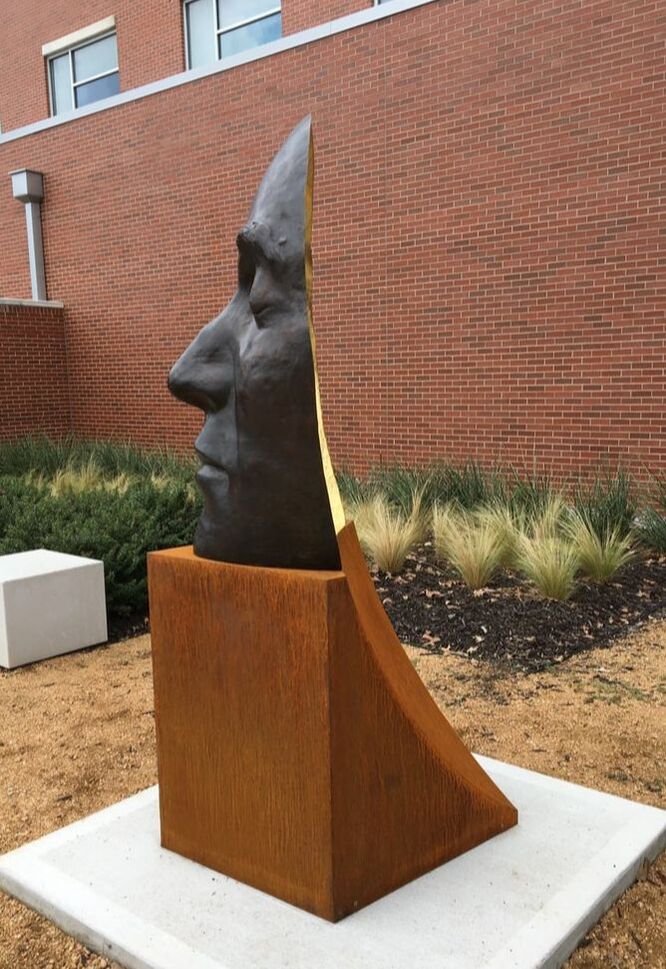
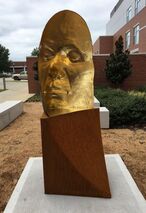
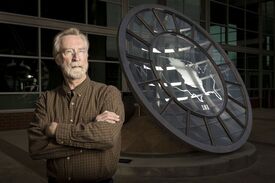
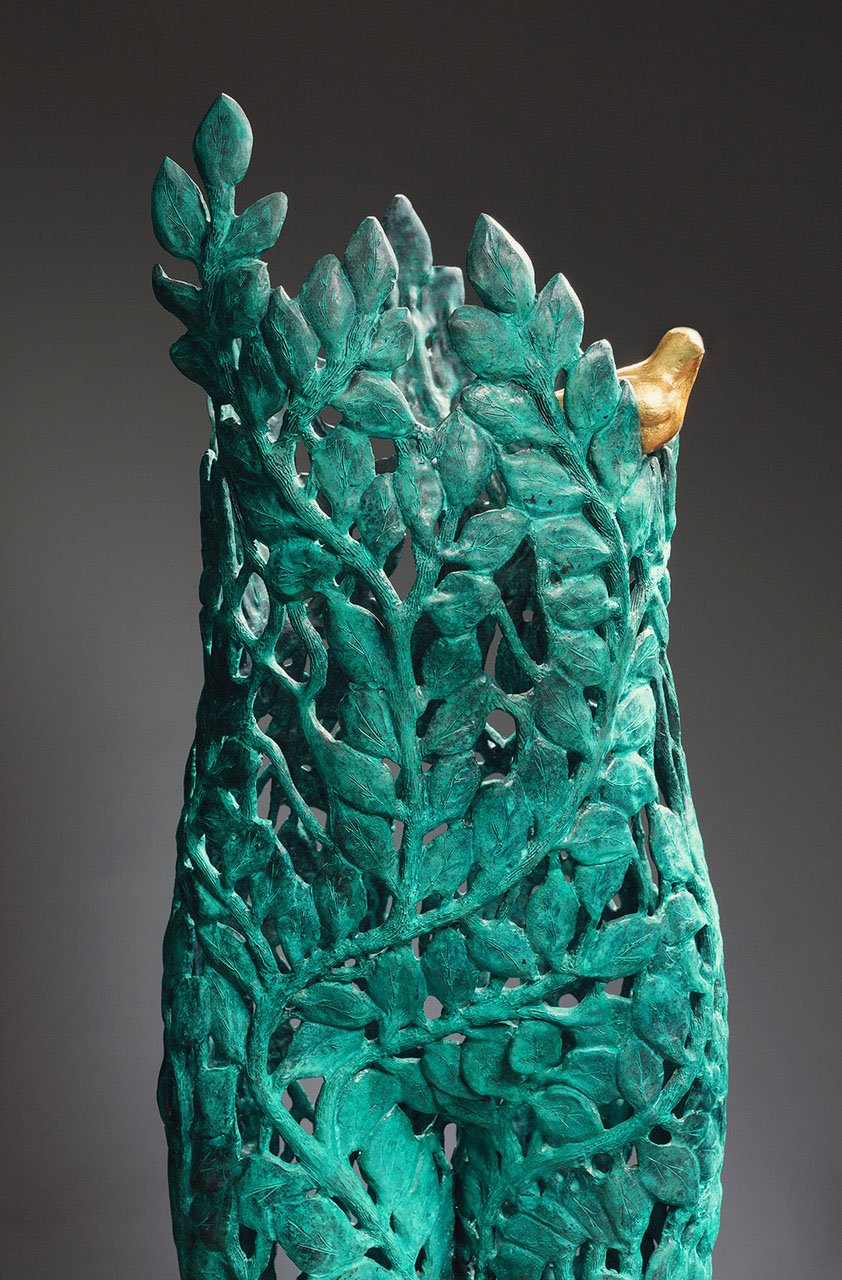
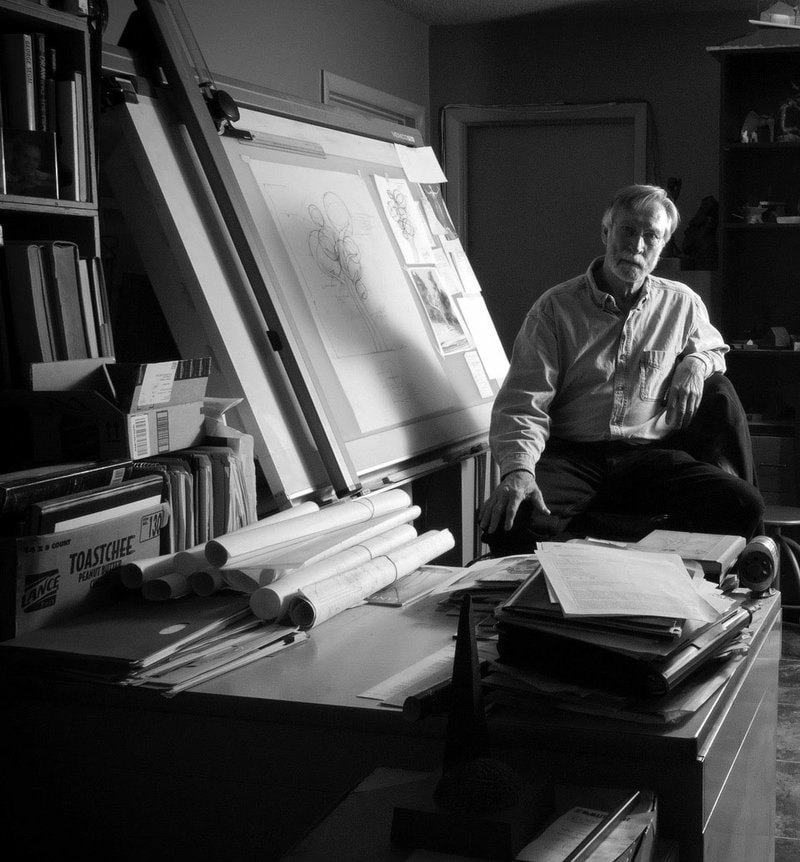
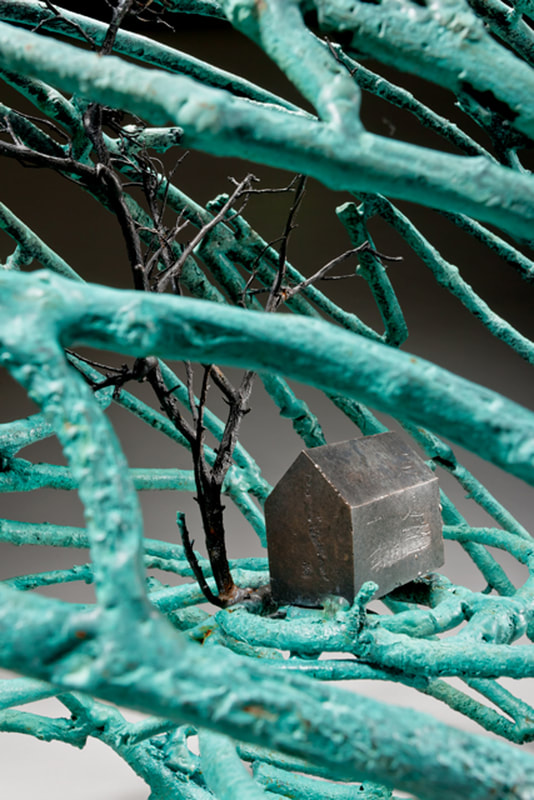
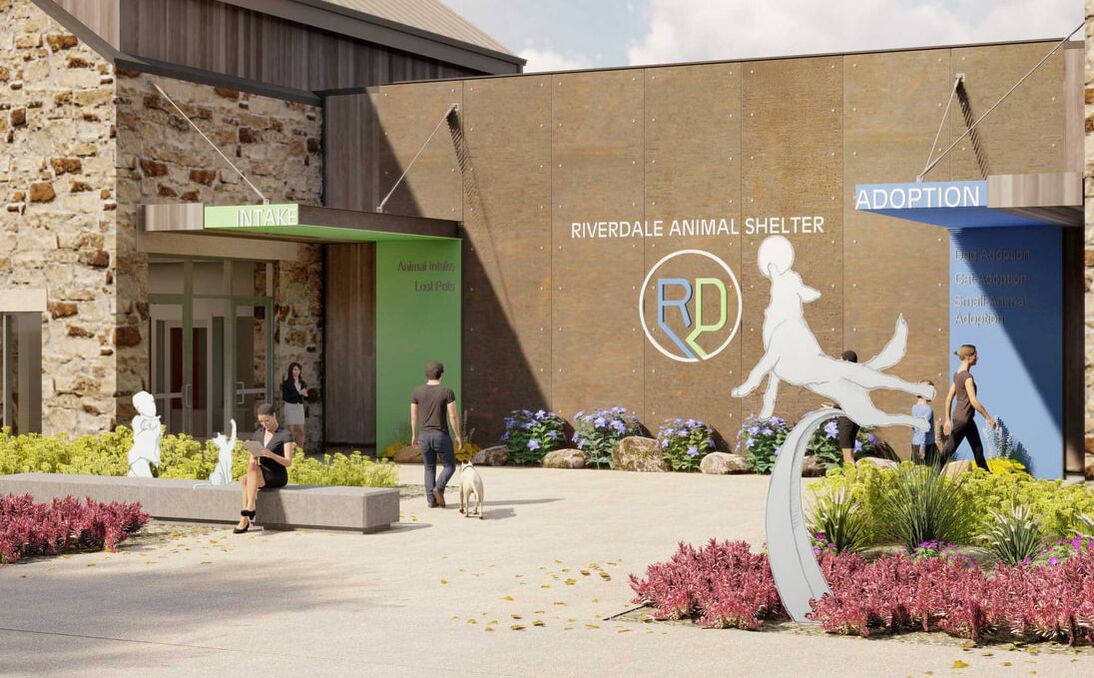
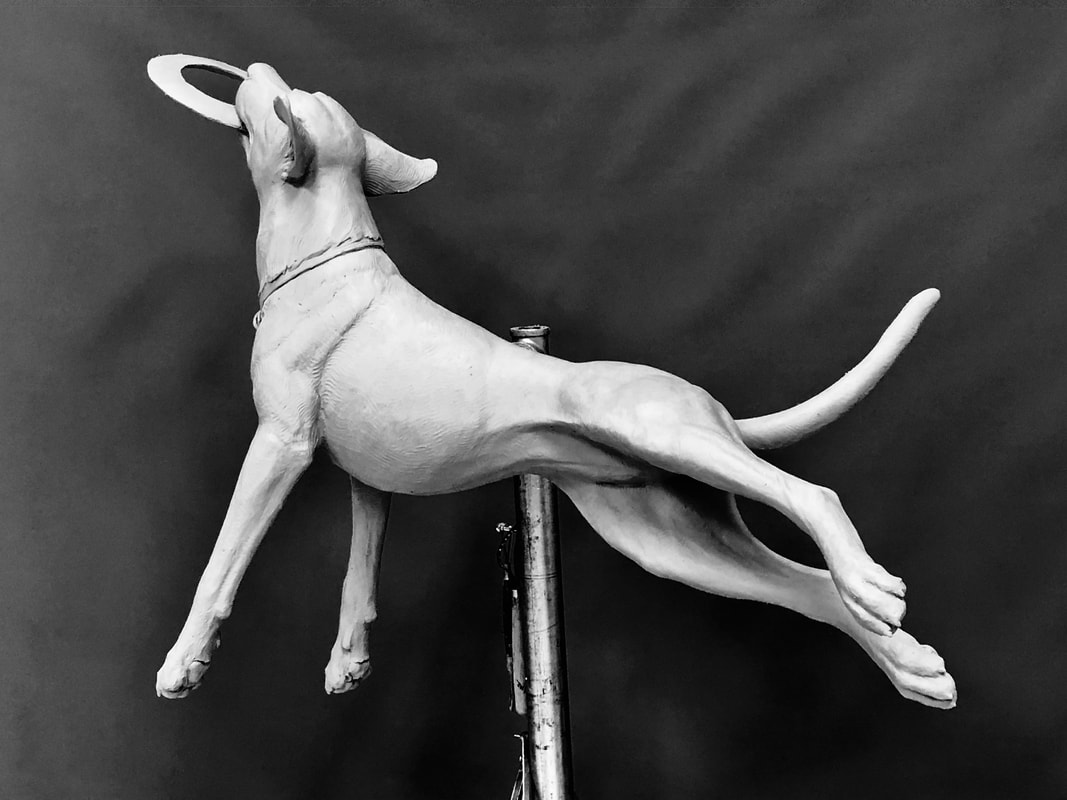

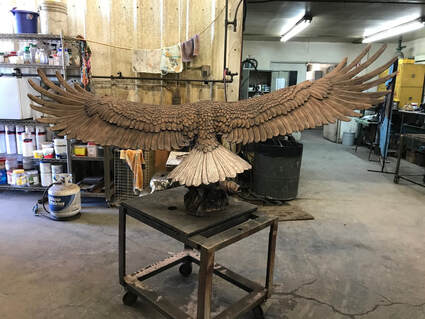
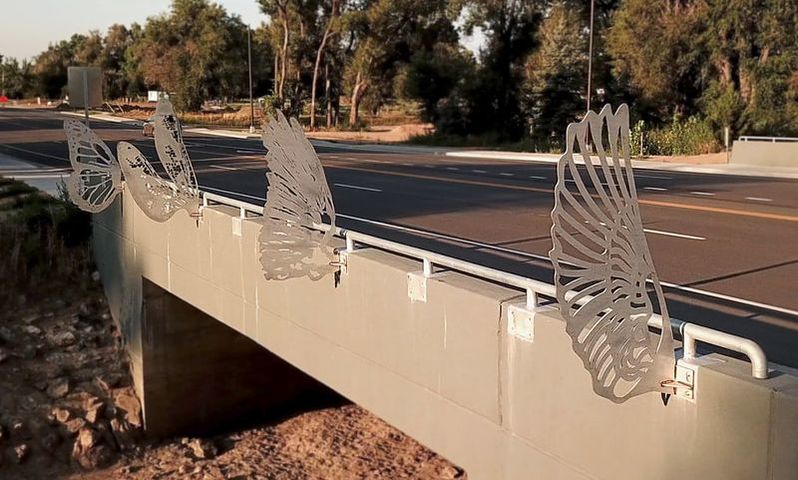
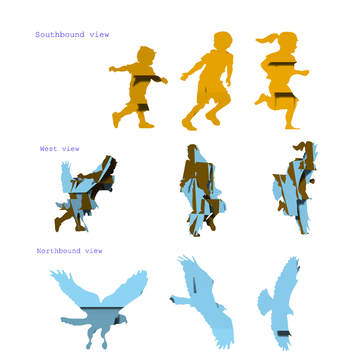
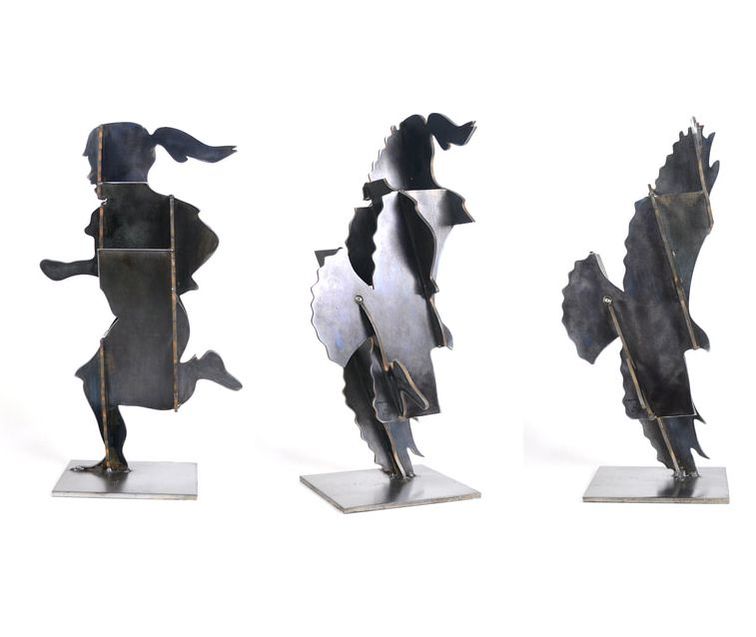
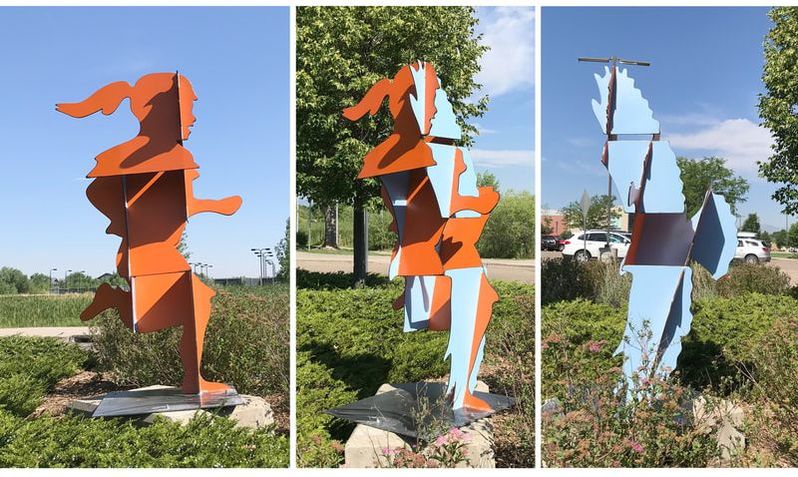
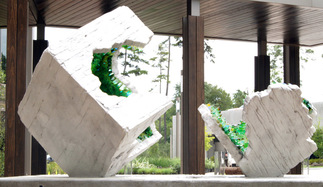
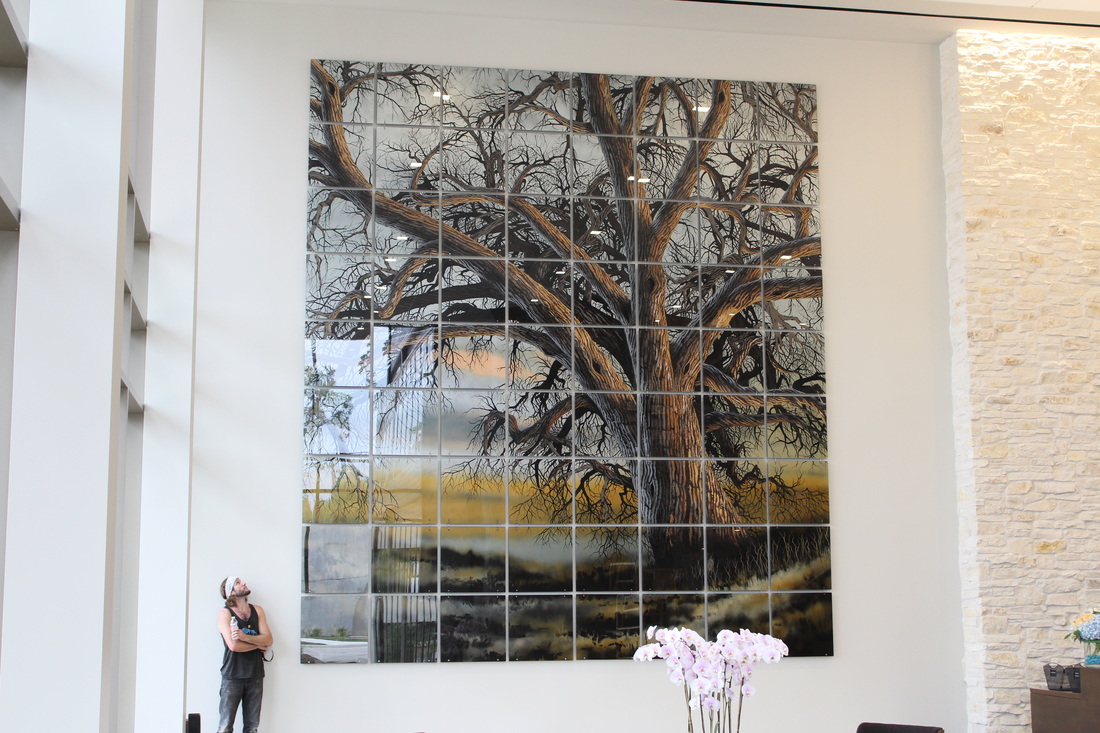
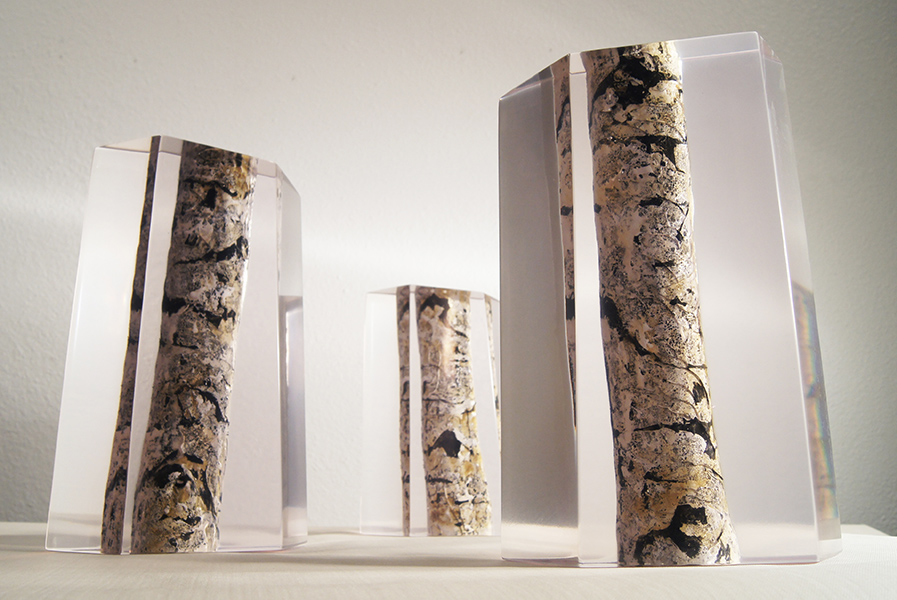

![Bonnie Gangelhoff / Southwest Art Jul 01, 2004
Sculptor Carol Gold wrings strong emotions from her sleek bronze figures
EVERY JANUARY, California sculptor Carol Gold settles into her studio to begin the year anew with fresh ideas for her bronze pieces and a chunk of soft, hot wax with which to give them shape. Her ideas about the forms that will occupy her heart and hands over the next 12 months have percolated in her thoughts to some degree, but arise mostly from the unconscious, Gold says.
She squeezes, manipulates, and molds the wax, roughing in shapes as figures emerge-some large, some small, some flat, some rounded. Most of her forms represent the human figure, with the exception of a horse or two. "I think inspiration comes from a lot of places-from where I am emotionally as well as from nature," Gold explains from her airy, 770-square-foot studio perched on a hillside in Northern California. "My work is also informed by what`s going on in the world and what I read."
Last year, for instance, Gold says her work was directly affected by the turmoil in the world, including the U.S. invasion of Iraq and the events leading up to it. "I had this feeling all last year that what I needed to do was create tranquil pieces," she says. "Some artists may respond to what`s going on in the world with anger, but I just can`t do that. I needed my sculptures to be an antidote to the chaos."
TRANQUILITY and EMBRACE, both created in 2003, are two of her most peaceful pieces-ones that Gold describes as "calm and loving." In TRANQUILITY, a relaxed figure sits staring into space as if looking out a window on a beautiful day. In EMBRACE, two people wrap their arms around each other in a display of tender affection. The latter bronze also is an example of how Gold is influenced by what she reads. After finishing the book War is a Force That Gives Us Meaning [2003 ANCHOR] by Chris Hedges, the sculptor was deeply moved by one of the points the author kept stressing. Hedges, a veteran war correspondent for The New York Times, explains in the book that while covering many wars and trying to survive in various war zones-including being ambushed in Central America and imprisoned in the Sudan-the only place he ever felt safe was in the home of a loving couple or family. "EMBRACE came out of that sense of a safe place in the midst of war," Gold says.
Of the many themes woven through Gold`s work, perhaps the most common is communication. Her sculptures often include two figures as in EVENING WALK, ARTTALK, and FIESTA. The moods the sculptor evokes in these twosomes are amazingly varied-from the contemplative, restful depiction of a couple strolling in EVENING WALK to the joyous dance captured in FIESTA. Gold manages to squeeze living, breathing emotion out of cold, hard bronze, whether it`s tenderness of spirit as in EMBRACE or the arrogant poses of two figures in ART TALK.
THERE ARE FEW CLUES in Gold`s sophisticated pieces to reveal her personal roots. Her sleek, contemporary figures are a far artistic cry from growing up on a dairy farm in western Massachusetts. About the only trace of her childhood that a viewer glimpses is through the horses that emerge in her work every now and then. As a girl, Gold spent countless hours riding through the countryside, enjoying the calm and solitude. "I would get on my horse, and all of my anxieties would melt away," she recalls. Today her bronze equines are remnants of those bygone days. Now, as then, the horses represent freedom to the artist. "They were my only mode of escape as a child," she explains.
In addition to a fondness for roaming the countryside on her horse, Gold`s other main interests in her youth were drawing and poring over her parents` book on the history of painting. "At one point my mom gave me art lessons, but I was always more interested in animals," she recalls.
When she headed to Cornell University in Ithaca, NY, Gold was bent on studying veterinary medicine. But her entire world spun in a different direction one day when she signed up for an art history class. After a few hours in class, she was sure that all she ever wanted to pursue was art. Gold quickly changed her major to art and architecture but encountered some rocky patches in subsequent classes. She wanted to learn more about technique, but it was fashionable in the art department then to focus on self-expression. Married at the time, Gold and her husband moved to Boston, MA, after three years at Cornell. She transferred to Boston University, where her artistic desires were met with a more welcome attitude in the fine-arts department. "It was a breath of fresh air," Gold says. "I just wanted to learn the basics like stretching canvas and printmaking first, just the tools I needed in the beginning."
In 1968 Gold moved to California, where she has remained ever since. When her four children were young, she worked at their elementary school as an assistant to a sculpting teacher. By 1972 she was sculpting full time, working first with clay. Three-dimensional forms have always held more allure for Gold, moving her in a way that painting and other two-dimensional artworks have failed to do. Likewise, figures in art have usually had an emotional impact on her, while nonobjective art rarely engages her with quite the same intensity.
Gold`s work has evolved over the past two decades as she moved from clay to wax about 10 years ago. "Clay was too earthbound," she says. "Wax gives me a chance to be more expressive in my forms." While experimenting with wax she has developed a technique for incorporating pieces of burlap, which allows her to fully realize one of what she calls her "two basic sculpting vocabularies"-flat, nude figures and draped figures. Because wax is easier to manipulate than clay, the material goes a long way in helping Gold convey emotions and mood. And using wax enables her to "sketch in" figures rapidly when her ideas are taking shape at the beginning of the year. The sculptor creates about 30 such shapes, but by the end of the year only six or seven will survive and be cast in bronze. "They need to really strike me as far as the mood I am trying to convey, or I will throw them away," she says.
Another signature Gold element is the stunningly rich patinas on her bronze pieces, in colors that range from earthy gold and copper tones to various shades of turquoise that often evoke a southwestern flavor. As this story went to press, the sculptor was preparing works for the prestigious Sculpture in the Park show, held every August in Loveland, CO [see page 74]. Her piece FIESTA is also scheduled for installation in Lovelanci`s Benson Sculpture Park this summer.
Gold isn`t fond of speculating about what ideas she will explore in the future, except to say that communication is always a reoccurring theme. For now, she`s content to read, share opinions, pay attention to the world at large, and have faith that when a hunk of wax is set before her, her unconscious will light the way.
Gold is represented by Bronze Coast Gallery, Cannon Beach, OR; Savage Stephens Contemporary Art Works, Carmel, CA; Coda Gallery, Palm Desert, CA, and New York, NY; and Columbine Gallery, Loveland, CO, and Santa Fe, NM.
SIDEBAR
"I think inspiration comes from a lot of places-from where I am emotionally as well as from nature."
ILLUSTRATIONS
EMBRACE, BRONZE, 14 × 7 × 3 ½.
FIESTA, BRONZE, 29 ½ × 36 × 9.
CAROL GOLD
ART TALK, BRONZE, 17 × 15 × 8.
CELEBRATION, BRONZE, 19 ½ × 12 × 6.
KOBILA, BRONZE, 23 × 25 × 9.
AUTHOR AFFILIATION
Bonnie Gangelhoff is the senior editor of Southwest Art.
COPYRIGHT: Copyright Sabot Publishing, Inc. Jul 2004. Provided by Proquest- CSA, LLC. All Rights Reserved. Only fair use as provided by the United States copyright law is permitted.](/uploads/2/7/2/8/27284499/embrace-2003.jpg)
![Bonnie Gangelhoff / Southwest Art Jul 01, 2004
Sculptor Carol Gold wrings strong emotions from her sleek bronze figures
EVERY JANUARY, California sculptor Carol Gold settles into her studio to begin the year anew with fresh ideas for her bronze pieces and a chunk of soft, hot wax with which to give them shape. Her ideas about the forms that will occupy her heart and hands over the next 12 months have percolated in her thoughts to some degree, but arise mostly from the unconscious, Gold says.
She squeezes, manipulates, and molds the wax, roughing in shapes as figures emerge-some large, some small, some flat, some rounded. Most of her forms represent the human figure, with the exception of a horse or two. "I think inspiration comes from a lot of places-from where I am emotionally as well as from nature," Gold explains from her airy, 770-square-foot studio perched on a hillside in Northern California. "My work is also informed by what`s going on in the world and what I read."
Last year, for instance, Gold says her work was directly affected by the turmoil in the world, including the U.S. invasion of Iraq and the events leading up to it. "I had this feeling all last year that what I needed to do was create tranquil pieces," she says. "Some artists may respond to what`s going on in the world with anger, but I just can`t do that. I needed my sculptures to be an antidote to the chaos."
TRANQUILITY and EMBRACE, both created in 2003, are two of her most peaceful pieces-ones that Gold describes as "calm and loving." In TRANQUILITY, a relaxed figure sits staring into space as if looking out a window on a beautiful day. In EMBRACE, two people wrap their arms around each other in a display of tender affection. The latter bronze also is an example of how Gold is influenced by what she reads. After finishing the book War is a Force That Gives Us Meaning [2003 ANCHOR] by Chris Hedges, the sculptor was deeply moved by one of the points the author kept stressing. Hedges, a veteran war correspondent for The New York Times, explains in the book that while covering many wars and trying to survive in various war zones-including being ambushed in Central America and imprisoned in the Sudan-the only place he ever felt safe was in the home of a loving couple or family. "EMBRACE came out of that sense of a safe place in the midst of war," Gold says.
Of the many themes woven through Gold`s work, perhaps the most common is communication. Her sculptures often include two figures as in EVENING WALK, ARTTALK, and FIESTA. The moods the sculptor evokes in these twosomes are amazingly varied-from the contemplative, restful depiction of a couple strolling in EVENING WALK to the joyous dance captured in FIESTA. Gold manages to squeeze living, breathing emotion out of cold, hard bronze, whether it`s tenderness of spirit as in EMBRACE or the arrogant poses of two figures in ART TALK.
THERE ARE FEW CLUES in Gold`s sophisticated pieces to reveal her personal roots. Her sleek, contemporary figures are a far artistic cry from growing up on a dairy farm in western Massachusetts. About the only trace of her childhood that a viewer glimpses is through the horses that emerge in her work every now and then. As a girl, Gold spent countless hours riding through the countryside, enjoying the calm and solitude. "I would get on my horse, and all of my anxieties would melt away," she recalls. Today her bronze equines are remnants of those bygone days. Now, as then, the horses represent freedom to the artist. "They were my only mode of escape as a child," she explains.
In addition to a fondness for roaming the countryside on her horse, Gold`s other main interests in her youth were drawing and poring over her parents` book on the history of painting. "At one point my mom gave me art lessons, but I was always more interested in animals," she recalls.
When she headed to Cornell University in Ithaca, NY, Gold was bent on studying veterinary medicine. But her entire world spun in a different direction one day when she signed up for an art history class. After a few hours in class, she was sure that all she ever wanted to pursue was art. Gold quickly changed her major to art and architecture but encountered some rocky patches in subsequent classes. She wanted to learn more about technique, but it was fashionable in the art department then to focus on self-expression. Married at the time, Gold and her husband moved to Boston, MA, after three years at Cornell. She transferred to Boston University, where her artistic desires were met with a more welcome attitude in the fine-arts department. "It was a breath of fresh air," Gold says. "I just wanted to learn the basics like stretching canvas and printmaking first, just the tools I needed in the beginning."
In 1968 Gold moved to California, where she has remained ever since. When her four children were young, she worked at their elementary school as an assistant to a sculpting teacher. By 1972 she was sculpting full time, working first with clay. Three-dimensional forms have always held more allure for Gold, moving her in a way that painting and other two-dimensional artworks have failed to do. Likewise, figures in art have usually had an emotional impact on her, while nonobjective art rarely engages her with quite the same intensity.
Gold`s work has evolved over the past two decades as she moved from clay to wax about 10 years ago. "Clay was too earthbound," she says. "Wax gives me a chance to be more expressive in my forms." While experimenting with wax she has developed a technique for incorporating pieces of burlap, which allows her to fully realize one of what she calls her "two basic sculpting vocabularies"-flat, nude figures and draped figures. Because wax is easier to manipulate than clay, the material goes a long way in helping Gold convey emotions and mood. And using wax enables her to "sketch in" figures rapidly when her ideas are taking shape at the beginning of the year. The sculptor creates about 30 such shapes, but by the end of the year only six or seven will survive and be cast in bronze. "They need to really strike me as far as the mood I am trying to convey, or I will throw them away," she says.
Another signature Gold element is the stunningly rich patinas on her bronze pieces, in colors that range from earthy gold and copper tones to various shades of turquoise that often evoke a southwestern flavor. As this story went to press, the sculptor was preparing works for the prestigious Sculpture in the Park show, held every August in Loveland, CO [see page 74]. Her piece FIESTA is also scheduled for installation in Lovelanci`s Benson Sculpture Park this summer.
Gold isn`t fond of speculating about what ideas she will explore in the future, except to say that communication is always a reoccurring theme. For now, she`s content to read, share opinions, pay attention to the world at large, and have faith that when a hunk of wax is set before her, her unconscious will light the way.
Gold is represented by Bronze Coast Gallery, Cannon Beach, OR; Savage Stephens Contemporary Art Works, Carmel, CA; Coda Gallery, Palm Desert, CA, and New York, NY; and Columbine Gallery, Loveland, CO, and Santa Fe, NM.
SIDEBAR
"I think inspiration comes from a lot of places-from where I am emotionally as well as from nature."
ILLUSTRATIONS
EMBRACE, BRONZE, 14 × 7 × 3 ½.
FIESTA, BRONZE, 29 ½ × 36 × 9.
CAROL GOLD
ART TALK, BRONZE, 17 × 15 × 8.
CELEBRATION, BRONZE, 19 ½ × 12 × 6.
KOBILA, BRONZE, 23 × 25 × 9.
AUTHOR AFFILIATION
Bonnie Gangelhoff is the senior editor of Southwest Art.
COPYRIGHT: Copyright Sabot Publishing, Inc. Jul 2004. Provided by Proquest- CSA, LLC. All Rights Reserved. Only fair use as provided by the United States copyright law is permitted.](/uploads/2/7/2/8/27284499/fiesta-2003.jpg)
![Bonnie Gangelhoff / Southwest Art Jul 01, 2004
Sculptor Carol Gold wrings strong emotions from her sleek bronze figures
EVERY JANUARY, California sculptor Carol Gold settles into her studio to begin the year anew with fresh ideas for her bronze pieces and a chunk of soft, hot wax with which to give them shape. Her ideas about the forms that will occupy her heart and hands over the next 12 months have percolated in her thoughts to some degree, but arise mostly from the unconscious, Gold says.
She squeezes, manipulates, and molds the wax, roughing in shapes as figures emerge-some large, some small, some flat, some rounded. Most of her forms represent the human figure, with the exception of a horse or two. "I think inspiration comes from a lot of places-from where I am emotionally as well as from nature," Gold explains from her airy, 770-square-foot studio perched on a hillside in Northern California. "My work is also informed by what`s going on in the world and what I read."
Last year, for instance, Gold says her work was directly affected by the turmoil in the world, including the U.S. invasion of Iraq and the events leading up to it. "I had this feeling all last year that what I needed to do was create tranquil pieces," she says. "Some artists may respond to what`s going on in the world with anger, but I just can`t do that. I needed my sculptures to be an antidote to the chaos."
TRANQUILITY and EMBRACE, both created in 2003, are two of her most peaceful pieces-ones that Gold describes as "calm and loving." In TRANQUILITY, a relaxed figure sits staring into space as if looking out a window on a beautiful day. In EMBRACE, two people wrap their arms around each other in a display of tender affection. The latter bronze also is an example of how Gold is influenced by what she reads. After finishing the book War is a Force That Gives Us Meaning [2003 ANCHOR] by Chris Hedges, the sculptor was deeply moved by one of the points the author kept stressing. Hedges, a veteran war correspondent for The New York Times, explains in the book that while covering many wars and trying to survive in various war zones-including being ambushed in Central America and imprisoned in the Sudan-the only place he ever felt safe was in the home of a loving couple or family. "EMBRACE came out of that sense of a safe place in the midst of war," Gold says.
Of the many themes woven through Gold`s work, perhaps the most common is communication. Her sculptures often include two figures as in EVENING WALK, ARTTALK, and FIESTA. The moods the sculptor evokes in these twosomes are amazingly varied-from the contemplative, restful depiction of a couple strolling in EVENING WALK to the joyous dance captured in FIESTA. Gold manages to squeeze living, breathing emotion out of cold, hard bronze, whether it`s tenderness of spirit as in EMBRACE or the arrogant poses of two figures in ART TALK.
THERE ARE FEW CLUES in Gold`s sophisticated pieces to reveal her personal roots. Her sleek, contemporary figures are a far artistic cry from growing up on a dairy farm in western Massachusetts. About the only trace of her childhood that a viewer glimpses is through the horses that emerge in her work every now and then. As a girl, Gold spent countless hours riding through the countryside, enjoying the calm and solitude. "I would get on my horse, and all of my anxieties would melt away," she recalls. Today her bronze equines are remnants of those bygone days. Now, as then, the horses represent freedom to the artist. "They were my only mode of escape as a child," she explains.
In addition to a fondness for roaming the countryside on her horse, Gold`s other main interests in her youth were drawing and poring over her parents` book on the history of painting. "At one point my mom gave me art lessons, but I was always more interested in animals," she recalls.
When she headed to Cornell University in Ithaca, NY, Gold was bent on studying veterinary medicine. But her entire world spun in a different direction one day when she signed up for an art history class. After a few hours in class, she was sure that all she ever wanted to pursue was art. Gold quickly changed her major to art and architecture but encountered some rocky patches in subsequent classes. She wanted to learn more about technique, but it was fashionable in the art department then to focus on self-expression. Married at the time, Gold and her husband moved to Boston, MA, after three years at Cornell. She transferred to Boston University, where her artistic desires were met with a more welcome attitude in the fine-arts department. "It was a breath of fresh air," Gold says. "I just wanted to learn the basics like stretching canvas and printmaking first, just the tools I needed in the beginning."
In 1968 Gold moved to California, where she has remained ever since. When her four children were young, she worked at their elementary school as an assistant to a sculpting teacher. By 1972 she was sculpting full time, working first with clay. Three-dimensional forms have always held more allure for Gold, moving her in a way that painting and other two-dimensional artworks have failed to do. Likewise, figures in art have usually had an emotional impact on her, while nonobjective art rarely engages her with quite the same intensity.
Gold`s work has evolved over the past two decades as she moved from clay to wax about 10 years ago. "Clay was too earthbound," she says. "Wax gives me a chance to be more expressive in my forms." While experimenting with wax she has developed a technique for incorporating pieces of burlap, which allows her to fully realize one of what she calls her "two basic sculpting vocabularies"-flat, nude figures and draped figures. Because wax is easier to manipulate than clay, the material goes a long way in helping Gold convey emotions and mood. And using wax enables her to "sketch in" figures rapidly when her ideas are taking shape at the beginning of the year. The sculptor creates about 30 such shapes, but by the end of the year only six or seven will survive and be cast in bronze. "They need to really strike me as far as the mood I am trying to convey, or I will throw them away," she says.
Another signature Gold element is the stunningly rich patinas on her bronze pieces, in colors that range from earthy gold and copper tones to various shades of turquoise that often evoke a southwestern flavor. As this story went to press, the sculptor was preparing works for the prestigious Sculpture in the Park show, held every August in Loveland, CO [see page 74]. Her piece FIESTA is also scheduled for installation in Lovelanci`s Benson Sculpture Park this summer.
Gold isn`t fond of speculating about what ideas she will explore in the future, except to say that communication is always a reoccurring theme. For now, she`s content to read, share opinions, pay attention to the world at large, and have faith that when a hunk of wax is set before her, her unconscious will light the way.
Gold is represented by Bronze Coast Gallery, Cannon Beach, OR; Savage Stephens Contemporary Art Works, Carmel, CA; Coda Gallery, Palm Desert, CA, and New York, NY; and Columbine Gallery, Loveland, CO, and Santa Fe, NM.
SIDEBAR
"I think inspiration comes from a lot of places-from where I am emotionally as well as from nature."
ILLUSTRATIONS
EMBRACE, BRONZE, 14 × 7 × 3 ½.
FIESTA, BRONZE, 29 ½ × 36 × 9.
CAROL GOLD
ART TALK, BRONZE, 17 × 15 × 8.
CELEBRATION, BRONZE, 19 ½ × 12 × 6.
KOBILA, BRONZE, 23 × 25 × 9.
AUTHOR AFFILIATION
Bonnie Gangelhoff is the senior editor of Southwest Art.
COPYRIGHT: Copyright Sabot Publishing, Inc. Jul 2004. Provided by Proquest- CSA, LLC. All Rights Reserved. Only fair use as provided by the United States copyright law is permitted.](/uploads/2/7/2/8/27284499/1carol-photo.jpg)
![Bonnie Gangelhoff / Southwest Art Jul 01, 2004
Sculptor Carol Gold wrings strong emotions from her sleek bronze figures
EVERY JANUARY, California sculptor Carol Gold settles into her studio to begin the year anew with fresh ideas for her bronze pieces and a chunk of soft, hot wax with which to give them shape. Her ideas about the forms that will occupy her heart and hands over the next 12 months have percolated in her thoughts to some degree, but arise mostly from the unconscious, Gold says.
She squeezes, manipulates, and molds the wax, roughing in shapes as figures emerge-some large, some small, some flat, some rounded. Most of her forms represent the human figure, with the exception of a horse or two. "I think inspiration comes from a lot of places-from where I am emotionally as well as from nature," Gold explains from her airy, 770-square-foot studio perched on a hillside in Northern California. "My work is also informed by what`s going on in the world and what I read."
Last year, for instance, Gold says her work was directly affected by the turmoil in the world, including the U.S. invasion of Iraq and the events leading up to it. "I had this feeling all last year that what I needed to do was create tranquil pieces," she says. "Some artists may respond to what`s going on in the world with anger, but I just can`t do that. I needed my sculptures to be an antidote to the chaos."
TRANQUILITY and EMBRACE, both created in 2003, are two of her most peaceful pieces-ones that Gold describes as "calm and loving." In TRANQUILITY, a relaxed figure sits staring into space as if looking out a window on a beautiful day. In EMBRACE, two people wrap their arms around each other in a display of tender affection. The latter bronze also is an example of how Gold is influenced by what she reads. After finishing the book War is a Force That Gives Us Meaning [2003 ANCHOR] by Chris Hedges, the sculptor was deeply moved by one of the points the author kept stressing. Hedges, a veteran war correspondent for The New York Times, explains in the book that while covering many wars and trying to survive in various war zones-including being ambushed in Central America and imprisoned in the Sudan-the only place he ever felt safe was in the home of a loving couple or family. "EMBRACE came out of that sense of a safe place in the midst of war," Gold says.
Of the many themes woven through Gold`s work, perhaps the most common is communication. Her sculptures often include two figures as in EVENING WALK, ARTTALK, and FIESTA. The moods the sculptor evokes in these twosomes are amazingly varied-from the contemplative, restful depiction of a couple strolling in EVENING WALK to the joyous dance captured in FIESTA. Gold manages to squeeze living, breathing emotion out of cold, hard bronze, whether it`s tenderness of spirit as in EMBRACE or the arrogant poses of two figures in ART TALK.
THERE ARE FEW CLUES in Gold`s sophisticated pieces to reveal her personal roots. Her sleek, contemporary figures are a far artistic cry from growing up on a dairy farm in western Massachusetts. About the only trace of her childhood that a viewer glimpses is through the horses that emerge in her work every now and then. As a girl, Gold spent countless hours riding through the countryside, enjoying the calm and solitude. "I would get on my horse, and all of my anxieties would melt away," she recalls. Today her bronze equines are remnants of those bygone days. Now, as then, the horses represent freedom to the artist. "They were my only mode of escape as a child," she explains.
In addition to a fondness for roaming the countryside on her horse, Gold`s other main interests in her youth were drawing and poring over her parents` book on the history of painting. "At one point my mom gave me art lessons, but I was always more interested in animals," she recalls.
When she headed to Cornell University in Ithaca, NY, Gold was bent on studying veterinary medicine. But her entire world spun in a different direction one day when she signed up for an art history class. After a few hours in class, she was sure that all she ever wanted to pursue was art. Gold quickly changed her major to art and architecture but encountered some rocky patches in subsequent classes. She wanted to learn more about technique, but it was fashionable in the art department then to focus on self-expression. Married at the time, Gold and her husband moved to Boston, MA, after three years at Cornell. She transferred to Boston University, where her artistic desires were met with a more welcome attitude in the fine-arts department. "It was a breath of fresh air," Gold says. "I just wanted to learn the basics like stretching canvas and printmaking first, just the tools I needed in the beginning."
In 1968 Gold moved to California, where she has remained ever since. When her four children were young, she worked at their elementary school as an assistant to a sculpting teacher. By 1972 she was sculpting full time, working first with clay. Three-dimensional forms have always held more allure for Gold, moving her in a way that painting and other two-dimensional artworks have failed to do. Likewise, figures in art have usually had an emotional impact on her, while nonobjective art rarely engages her with quite the same intensity.
Gold`s work has evolved over the past two decades as she moved from clay to wax about 10 years ago. "Clay was too earthbound," she says. "Wax gives me a chance to be more expressive in my forms." While experimenting with wax she has developed a technique for incorporating pieces of burlap, which allows her to fully realize one of what she calls her "two basic sculpting vocabularies"-flat, nude figures and draped figures. Because wax is easier to manipulate than clay, the material goes a long way in helping Gold convey emotions and mood. And using wax enables her to "sketch in" figures rapidly when her ideas are taking shape at the beginning of the year. The sculptor creates about 30 such shapes, but by the end of the year only six or seven will survive and be cast in bronze. "They need to really strike me as far as the mood I am trying to convey, or I will throw them away," she says.
Another signature Gold element is the stunningly rich patinas on her bronze pieces, in colors that range from earthy gold and copper tones to various shades of turquoise that often evoke a southwestern flavor. As this story went to press, the sculptor was preparing works for the prestigious Sculpture in the Park show, held every August in Loveland, CO [see page 74]. Her piece FIESTA is also scheduled for installation in Lovelanci`s Benson Sculpture Park this summer.
Gold isn`t fond of speculating about what ideas she will explore in the future, except to say that communication is always a reoccurring theme. For now, she`s content to read, share opinions, pay attention to the world at large, and have faith that when a hunk of wax is set before her, her unconscious will light the way.
Gold is represented by Bronze Coast Gallery, Cannon Beach, OR; Savage Stephens Contemporary Art Works, Carmel, CA; Coda Gallery, Palm Desert, CA, and New York, NY; and Columbine Gallery, Loveland, CO, and Santa Fe, NM.
SIDEBAR
"I think inspiration comes from a lot of places-from where I am emotionally as well as from nature."
ILLUSTRATIONS
EMBRACE, BRONZE, 14 × 7 × 3 ½.
FIESTA, BRONZE, 29 ½ × 36 × 9.
CAROL GOLD
ART TALK, BRONZE, 17 × 15 × 8.
CELEBRATION, BRONZE, 19 ½ × 12 × 6.
KOBILA, BRONZE, 23 × 25 × 9.
AUTHOR AFFILIATION
Bonnie Gangelhoff is the senior editor of Southwest Art.
COPYRIGHT: Copyright Sabot Publishing, Inc. Jul 2004. Provided by Proquest- CSA, LLC. All Rights Reserved. Only fair use as provided by the United States copyright law is permitted.](/uploads/2/7/2/8/27284499/art-talk1.jpg)
![Bonnie Gangelhoff / Southwest Art Jul 01, 2004
Sculptor Carol Gold wrings strong emotions from her sleek bronze figures
EVERY JANUARY, California sculptor Carol Gold settles into her studio to begin the year anew with fresh ideas for her bronze pieces and a chunk of soft, hot wax with which to give them shape. Her ideas about the forms that will occupy her heart and hands over the next 12 months have percolated in her thoughts to some degree, but arise mostly from the unconscious, Gold says.
She squeezes, manipulates, and molds the wax, roughing in shapes as figures emerge-some large, some small, some flat, some rounded. Most of her forms represent the human figure, with the exception of a horse or two. "I think inspiration comes from a lot of places-from where I am emotionally as well as from nature," Gold explains from her airy, 770-square-foot studio perched on a hillside in Northern California. "My work is also informed by what`s going on in the world and what I read."
Last year, for instance, Gold says her work was directly affected by the turmoil in the world, including the U.S. invasion of Iraq and the events leading up to it. "I had this feeling all last year that what I needed to do was create tranquil pieces," she says. "Some artists may respond to what`s going on in the world with anger, but I just can`t do that. I needed my sculptures to be an antidote to the chaos."
TRANQUILITY and EMBRACE, both created in 2003, are two of her most peaceful pieces-ones that Gold describes as "calm and loving." In TRANQUILITY, a relaxed figure sits staring into space as if looking out a window on a beautiful day. In EMBRACE, two people wrap their arms around each other in a display of tender affection. The latter bronze also is an example of how Gold is influenced by what she reads. After finishing the book War is a Force That Gives Us Meaning [2003 ANCHOR] by Chris Hedges, the sculptor was deeply moved by one of the points the author kept stressing. Hedges, a veteran war correspondent for The New York Times, explains in the book that while covering many wars and trying to survive in various war zones-including being ambushed in Central America and imprisoned in the Sudan-the only place he ever felt safe was in the home of a loving couple or family. "EMBRACE came out of that sense of a safe place in the midst of war," Gold says.
Of the many themes woven through Gold`s work, perhaps the most common is communication. Her sculptures often include two figures as in EVENING WALK, ARTTALK, and FIESTA. The moods the sculptor evokes in these twosomes are amazingly varied-from the contemplative, restful depiction of a couple strolling in EVENING WALK to the joyous dance captured in FIESTA. Gold manages to squeeze living, breathing emotion out of cold, hard bronze, whether it`s tenderness of spirit as in EMBRACE or the arrogant poses of two figures in ART TALK.
THERE ARE FEW CLUES in Gold`s sophisticated pieces to reveal her personal roots. Her sleek, contemporary figures are a far artistic cry from growing up on a dairy farm in western Massachusetts. About the only trace of her childhood that a viewer glimpses is through the horses that emerge in her work every now and then. As a girl, Gold spent countless hours riding through the countryside, enjoying the calm and solitude. "I would get on my horse, and all of my anxieties would melt away," she recalls. Today her bronze equines are remnants of those bygone days. Now, as then, the horses represent freedom to the artist. "They were my only mode of escape as a child," she explains.
In addition to a fondness for roaming the countryside on her horse, Gold`s other main interests in her youth were drawing and poring over her parents` book on the history of painting. "At one point my mom gave me art lessons, but I was always more interested in animals," she recalls.
When she headed to Cornell University in Ithaca, NY, Gold was bent on studying veterinary medicine. But her entire world spun in a different direction one day when she signed up for an art history class. After a few hours in class, she was sure that all she ever wanted to pursue was art. Gold quickly changed her major to art and architecture but encountered some rocky patches in subsequent classes. She wanted to learn more about technique, but it was fashionable in the art department then to focus on self-expression. Married at the time, Gold and her husband moved to Boston, MA, after three years at Cornell. She transferred to Boston University, where her artistic desires were met with a more welcome attitude in the fine-arts department. "It was a breath of fresh air," Gold says. "I just wanted to learn the basics like stretching canvas and printmaking first, just the tools I needed in the beginning."
In 1968 Gold moved to California, where she has remained ever since. When her four children were young, she worked at their elementary school as an assistant to a sculpting teacher. By 1972 she was sculpting full time, working first with clay. Three-dimensional forms have always held more allure for Gold, moving her in a way that painting and other two-dimensional artworks have failed to do. Likewise, figures in art have usually had an emotional impact on her, while nonobjective art rarely engages her with quite the same intensity.
Gold`s work has evolved over the past two decades as she moved from clay to wax about 10 years ago. "Clay was too earthbound," she says. "Wax gives me a chance to be more expressive in my forms." While experimenting with wax she has developed a technique for incorporating pieces of burlap, which allows her to fully realize one of what she calls her "two basic sculpting vocabularies"-flat, nude figures and draped figures. Because wax is easier to manipulate than clay, the material goes a long way in helping Gold convey emotions and mood. And using wax enables her to "sketch in" figures rapidly when her ideas are taking shape at the beginning of the year. The sculptor creates about 30 such shapes, but by the end of the year only six or seven will survive and be cast in bronze. "They need to really strike me as far as the mood I am trying to convey, or I will throw them away," she says.
Another signature Gold element is the stunningly rich patinas on her bronze pieces, in colors that range from earthy gold and copper tones to various shades of turquoise that often evoke a southwestern flavor. As this story went to press, the sculptor was preparing works for the prestigious Sculpture in the Park show, held every August in Loveland, CO [see page 74]. Her piece FIESTA is also scheduled for installation in Lovelanci`s Benson Sculpture Park this summer.
Gold isn`t fond of speculating about what ideas she will explore in the future, except to say that communication is always a reoccurring theme. For now, she`s content to read, share opinions, pay attention to the world at large, and have faith that when a hunk of wax is set before her, her unconscious will light the way.
Gold is represented by Bronze Coast Gallery, Cannon Beach, OR; Savage Stephens Contemporary Art Works, Carmel, CA; Coda Gallery, Palm Desert, CA, and New York, NY; and Columbine Gallery, Loveland, CO, and Santa Fe, NM.
SIDEBAR
"I think inspiration comes from a lot of places-from where I am emotionally as well as from nature."
ILLUSTRATIONS
EMBRACE, BRONZE, 14 × 7 × 3 ½.
FIESTA, BRONZE, 29 ½ × 36 × 9.
CAROL GOLD
ART TALK, BRONZE, 17 × 15 × 8.
CELEBRATION, BRONZE, 19 ½ × 12 × 6.
KOBILA, BRONZE, 23 × 25 × 9.
AUTHOR AFFILIATION
Bonnie Gangelhoff is the senior editor of Southwest Art.
COPYRIGHT: Copyright Sabot Publishing, Inc. Jul 2004. Provided by Proquest- CSA, LLC. All Rights Reserved. Only fair use as provided by the United States copyright law is permitted.](/uploads/2/7/2/8/27284499/celebration-01.jpg)
![Bonnie Gangelhoff / Southwest Art Jul 01, 2004
Sculptor Carol Gold wrings strong emotions from her sleek bronze figures
EVERY JANUARY, California sculptor Carol Gold settles into her studio to begin the year anew with fresh ideas for her bronze pieces and a chunk of soft, hot wax with which to give them shape. Her ideas about the forms that will occupy her heart and hands over the next 12 months have percolated in her thoughts to some degree, but arise mostly from the unconscious, Gold says.
She squeezes, manipulates, and molds the wax, roughing in shapes as figures emerge-some large, some small, some flat, some rounded. Most of her forms represent the human figure, with the exception of a horse or two. "I think inspiration comes from a lot of places-from where I am emotionally as well as from nature," Gold explains from her airy, 770-square-foot studio perched on a hillside in Northern California. "My work is also informed by what`s going on in the world and what I read."
Last year, for instance, Gold says her work was directly affected by the turmoil in the world, including the U.S. invasion of Iraq and the events leading up to it. "I had this feeling all last year that what I needed to do was create tranquil pieces," she says. "Some artists may respond to what`s going on in the world with anger, but I just can`t do that. I needed my sculptures to be an antidote to the chaos."
TRANQUILITY and EMBRACE, both created in 2003, are two of her most peaceful pieces-ones that Gold describes as "calm and loving." In TRANQUILITY, a relaxed figure sits staring into space as if looking out a window on a beautiful day. In EMBRACE, two people wrap their arms around each other in a display of tender affection. The latter bronze also is an example of how Gold is influenced by what she reads. After finishing the book War is a Force That Gives Us Meaning [2003 ANCHOR] by Chris Hedges, the sculptor was deeply moved by one of the points the author kept stressing. Hedges, a veteran war correspondent for The New York Times, explains in the book that while covering many wars and trying to survive in various war zones-including being ambushed in Central America and imprisoned in the Sudan-the only place he ever felt safe was in the home of a loving couple or family. "EMBRACE came out of that sense of a safe place in the midst of war," Gold says.
Of the many themes woven through Gold`s work, perhaps the most common is communication. Her sculptures often include two figures as in EVENING WALK, ARTTALK, and FIESTA. The moods the sculptor evokes in these twosomes are amazingly varied-from the contemplative, restful depiction of a couple strolling in EVENING WALK to the joyous dance captured in FIESTA. Gold manages to squeeze living, breathing emotion out of cold, hard bronze, whether it`s tenderness of spirit as in EMBRACE or the arrogant poses of two figures in ART TALK.
THERE ARE FEW CLUES in Gold`s sophisticated pieces to reveal her personal roots. Her sleek, contemporary figures are a far artistic cry from growing up on a dairy farm in western Massachusetts. About the only trace of her childhood that a viewer glimpses is through the horses that emerge in her work every now and then. As a girl, Gold spent countless hours riding through the countryside, enjoying the calm and solitude. "I would get on my horse, and all of my anxieties would melt away," she recalls. Today her bronze equines are remnants of those bygone days. Now, as then, the horses represent freedom to the artist. "They were my only mode of escape as a child," she explains.
In addition to a fondness for roaming the countryside on her horse, Gold`s other main interests in her youth were drawing and poring over her parents` book on the history of painting. "At one point my mom gave me art lessons, but I was always more interested in animals," she recalls.
When she headed to Cornell University in Ithaca, NY, Gold was bent on studying veterinary medicine. But her entire world spun in a different direction one day when she signed up for an art history class. After a few hours in class, she was sure that all she ever wanted to pursue was art. Gold quickly changed her major to art and architecture but encountered some rocky patches in subsequent classes. She wanted to learn more about technique, but it was fashionable in the art department then to focus on self-expression. Married at the time, Gold and her husband moved to Boston, MA, after three years at Cornell. She transferred to Boston University, where her artistic desires were met with a more welcome attitude in the fine-arts department. "It was a breath of fresh air," Gold says. "I just wanted to learn the basics like stretching canvas and printmaking first, just the tools I needed in the beginning."
In 1968 Gold moved to California, where she has remained ever since. When her four children were young, she worked at their elementary school as an assistant to a sculpting teacher. By 1972 she was sculpting full time, working first with clay. Three-dimensional forms have always held more allure for Gold, moving her in a way that painting and other two-dimensional artworks have failed to do. Likewise, figures in art have usually had an emotional impact on her, while nonobjective art rarely engages her with quite the same intensity.
Gold`s work has evolved over the past two decades as she moved from clay to wax about 10 years ago. "Clay was too earthbound," she says. "Wax gives me a chance to be more expressive in my forms." While experimenting with wax she has developed a technique for incorporating pieces of burlap, which allows her to fully realize one of what she calls her "two basic sculpting vocabularies"-flat, nude figures and draped figures. Because wax is easier to manipulate than clay, the material goes a long way in helping Gold convey emotions and mood. And using wax enables her to "sketch in" figures rapidly when her ideas are taking shape at the beginning of the year. The sculptor creates about 30 such shapes, but by the end of the year only six or seven will survive and be cast in bronze. "They need to really strike me as far as the mood I am trying to convey, or I will throw them away," she says.
Another signature Gold element is the stunningly rich patinas on her bronze pieces, in colors that range from earthy gold and copper tones to various shades of turquoise that often evoke a southwestern flavor. As this story went to press, the sculptor was preparing works for the prestigious Sculpture in the Park show, held every August in Loveland, CO [see page 74]. Her piece FIESTA is also scheduled for installation in Lovelanci`s Benson Sculpture Park this summer.
Gold isn`t fond of speculating about what ideas she will explore in the future, except to say that communication is always a reoccurring theme. For now, she`s content to read, share opinions, pay attention to the world at large, and have faith that when a hunk of wax is set before her, her unconscious will light the way.
Gold is represented by Bronze Coast Gallery, Cannon Beach, OR; Savage Stephens Contemporary Art Works, Carmel, CA; Coda Gallery, Palm Desert, CA, and New York, NY; and Columbine Gallery, Loveland, CO, and Santa Fe, NM.
SIDEBAR
"I think inspiration comes from a lot of places-from where I am emotionally as well as from nature."
ILLUSTRATIONS
EMBRACE, BRONZE, 14 × 7 × 3 ½.
FIESTA, BRONZE, 29 ½ × 36 × 9.
CAROL GOLD
ART TALK, BRONZE, 17 × 15 × 8.
CELEBRATION, BRONZE, 19 ½ × 12 × 6.
KOBILA, BRONZE, 23 × 25 × 9.
AUTHOR AFFILIATION
Bonnie Gangelhoff is the senior editor of Southwest Art.
COPYRIGHT: Copyright Sabot Publishing, Inc. Jul 2004. Provided by Proquest- CSA, LLC. All Rights Reserved. Only fair use as provided by the United States copyright law is permitted.](/uploads/2/7/2/8/27284499/kobila.jpg)


 RSS Feed
RSS Feed
